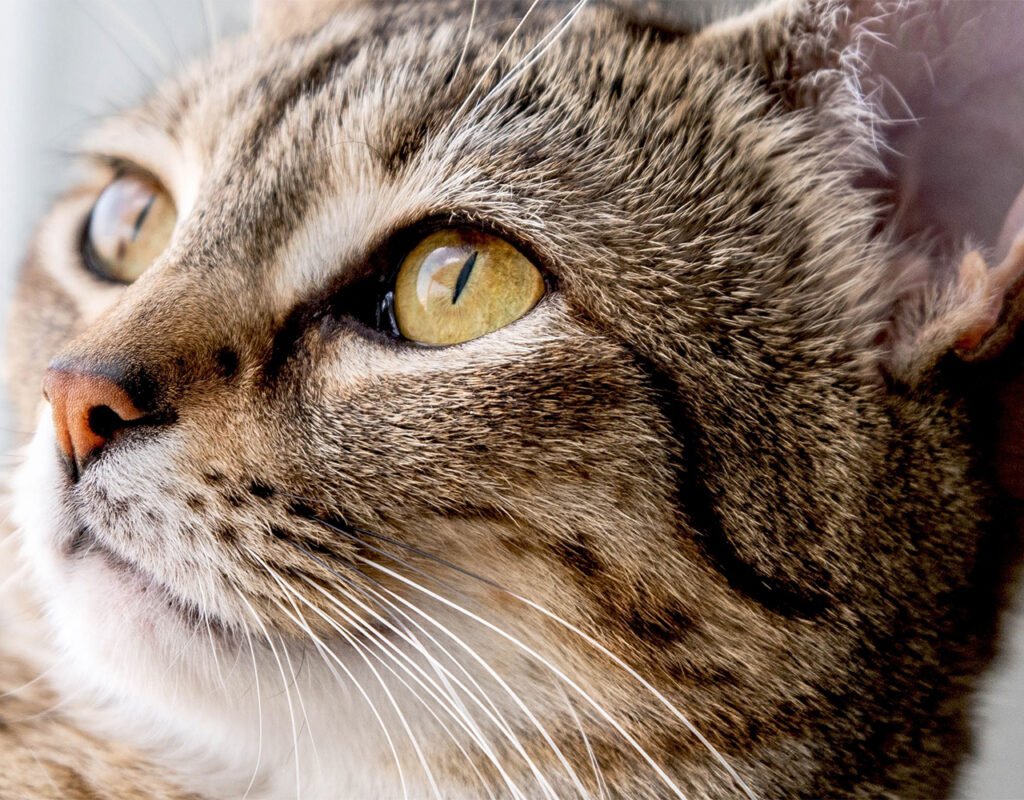Just like with humans, you can learn a number of things by looking into your cat’s eyes. A cat’s pupils should normally be the same size. A change in the pupil size of an eye can indicate a number of conditions ranging from mild to serious. These include:
Eye infection
Horner’s syndrome (a neurological disorder)
FeLV (can cause pupil spasms)
Tumors
Central nervous system injury
The "third eyelid"
Cats have an inner third eyelid called the nictitating membrane that protects the eye from dryness and/or damage. When a cat is sick, the third eyelid partially closes over their eyes. This is a signal to take them to the vet immediately. Curiously, a very happy cat will also display this nictitating membrane.

Moody Eyes
“Like many other physical characteristics of cats, their moods are reflected in their eyes,” writes the owner of What Makes Cats Work. “Changes in pupil size are the clue: an angry cat will have constricted pupils, while an excited or frightened cat will have wide-open eyes with large pupils. The eyes of a calm, happy cat will sometimes appear a shade darker than normal. I can’t explain that, it’s just an observation.”
Eye Diseases and Conditions
Cats are susceptible to a number of the same diseases we sometimes get, including cataracts, glaucoma and conjunctivitis (pink eye). The latter, when caused by chlamydia bacteria, can be contagious to humans.
Because cats’ eyes are so important to their overall well-being, it’s crucial that you take your cat to the vet at the first sign of problems. Many diseases can be easily treated if caught early, but can lead to months of veterinary costs and possibly even blindness if ignored.
Cat Night Vision
Cats’ night vision is far superior to that of humans. Although they can’t see in total darkness, they can see with only one-sixth of the lighting we need to see. In cats, the muscles of the iris that surround the pupils are designed so that the eye constricts to a vertical slit in bright light and opens fully in very dim light to allow for maximum illumination.
In addition, a reflective layer behind the cat’s retina called the tapetum lucidum reflects incoming light and bounces it off the cones, making better use of the available light. The tapetum is likely responsible for the shiny green eyes you see when a small amount of light hits a cat’s eyes at night.
These special cat features likely evolved for survival, since wild cats are nocturnal and do much of their hunting at night.

Testing cat eyes to help humans
In 2000, a team of researchers at the University of California, Berkeley, used cats to learn more about human vision. During the controversial experiment, the team, led by Yang Dan, assistant professor of molecular and cellular biology, anesthetized the cats, implanted electrodes in their brains, and showed them images. They were able to record the cats’ responses to light and darkness and use a mathematical equation to convert the signals into images.
Because cats’ eyes are so similar to humans’, the team hoped to answer a number of questions about how the eye and brain work together to capture, encode, and reassemble images.
Fun Facts About Cat Eyes
Cats can’t see directly under their noses. You can test this by offering your cat a treat. She can smell it, but if you drop it right under her nose, she’ll have to dig around a bit to find it.
Rumors or not, cats aren’t colorblind. Their ability to see colors isn’t as acute as ours, but they can see some colors.
If normal human vision is 20/20, then a cat’s is 20/100. She has sharp vision for far-off objects, but things up close may appear blurry or out of focus. Perhaps this is why cats do the sniff test when greeting friends.
Most white, blue-eyed cats are deaf. A white cat with different eyes (one blue and one green or gold) will most often be deaf on the side with the blue eye.
Cats “kiss” with their eyes. Of course, a bite on the nose is also her way of giving a kiss. If you want to show your cat you love her, give her a cat kiss backck. Not on the nose. Just stare at it for a long time, blink slowly and see what happens.

